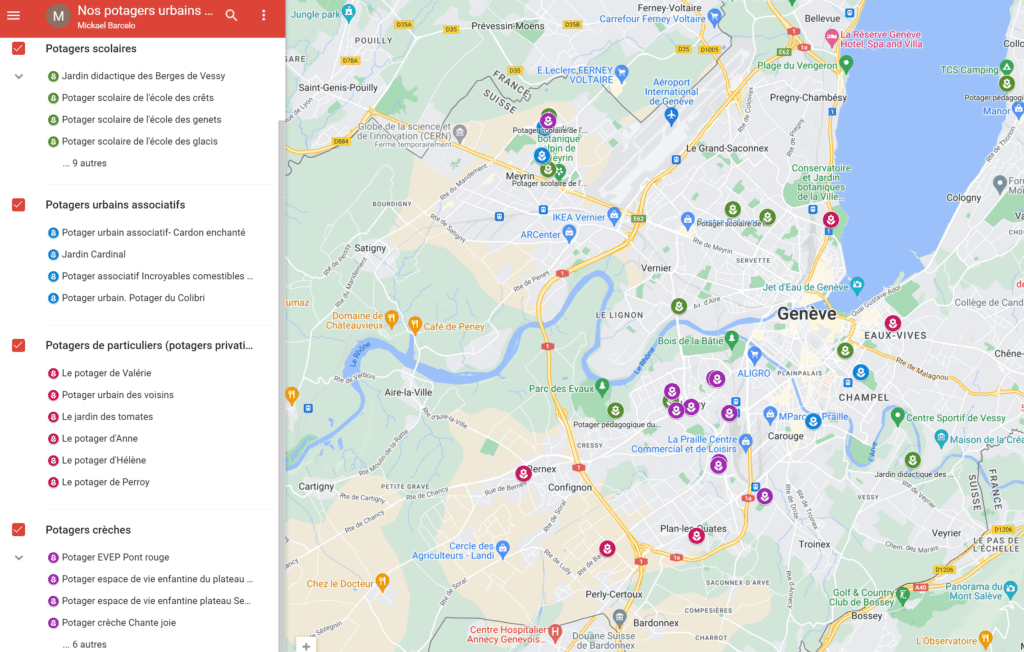Would you like to create a pond in your garden, but don’t know exactly how to go about it? What is the minimum depth, what material should you use to install your pond, or what plants should you plant? We’ll answer your questions in this article.
Since the 18th century, Switzerland has suffered an alarming loss of almost 90% of its ponds. This drastic reduction is particularly worrying, given that these aquatic environments are home to an exceptional diversity of flora and fauna.

The loss of these aquatic environments is often attributed to increasing urbanization, changes in land use and other human activities. In addition, the disappearance of ponds not only leads to a reduction in natural habitats, but also to a loss of ecosystem services, such as water regulation and the preservation of biological diversity.

The development and maintenance of these small bodies of water require little effort compared to the biological and aesthetic value they add to your garden. The proliferation of ponds in towns and cities helps to densify the network of small biotopes, creating biological corridors.
These facilitate the movement of organisms such as amphibians and dragonflies to other aquatic environments, such as streams and peri-urban ponds.
For those who prefer a video format, here is a summary of the benefits of ponds in preserving ecosystems.
Where to place your pond?
To create a welcoming, balanced pond in your garden, it’s best to opt for a natural depression or pre-existing marshy area. These locations facilitate water retention and help create a natural aquatic ecosystem.
It’s also important to choose a sunny or partially shaded spot to encourage the development of aquatic flora. Sunlight is essential for the growth of aquatic plants and the biological balance of the pond. But don’t let the pond overheat either: it’s best to plant vegetation to protect it from the midday summer sun.
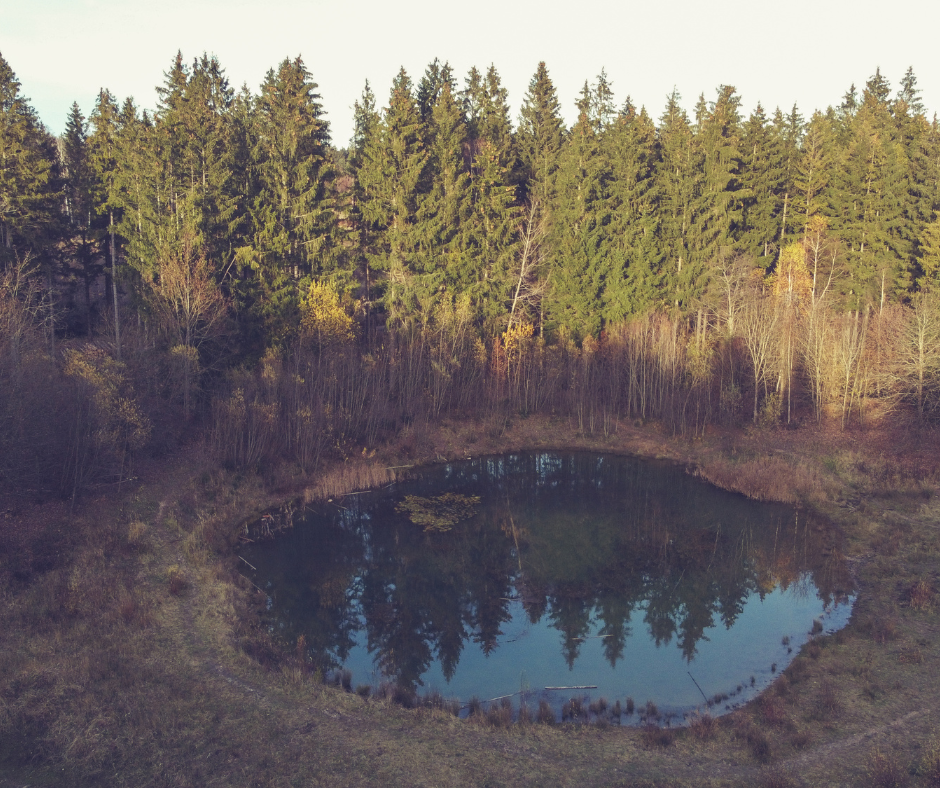
Example of native plants with edible fruits and nuts that can provide shade:
- Hawthorn – Crataegus sp.
- Male dogwood – Cornus mas
- Black elder – Sambucus nigra
- Hazelnut – Corylus avellana
- German medlar – Mespilus germanica
- Wild apple – Malus sylvestris
Position the pond away from trees to avoid excessive shading. This will also prevent the accumulation of dead leaves in the water, thus limiting the risk of naturalsilting up of the waterhole. It also prevents tree roots from colonizing the pond.
As far as possible, we’ll avoid placing it in the middle of the plot and instead dig it on the periphery of the garden, not far from a « wilder » area for example neaŕ a hedge or an unmowed area that will provide an ideal refuge for wildlife.
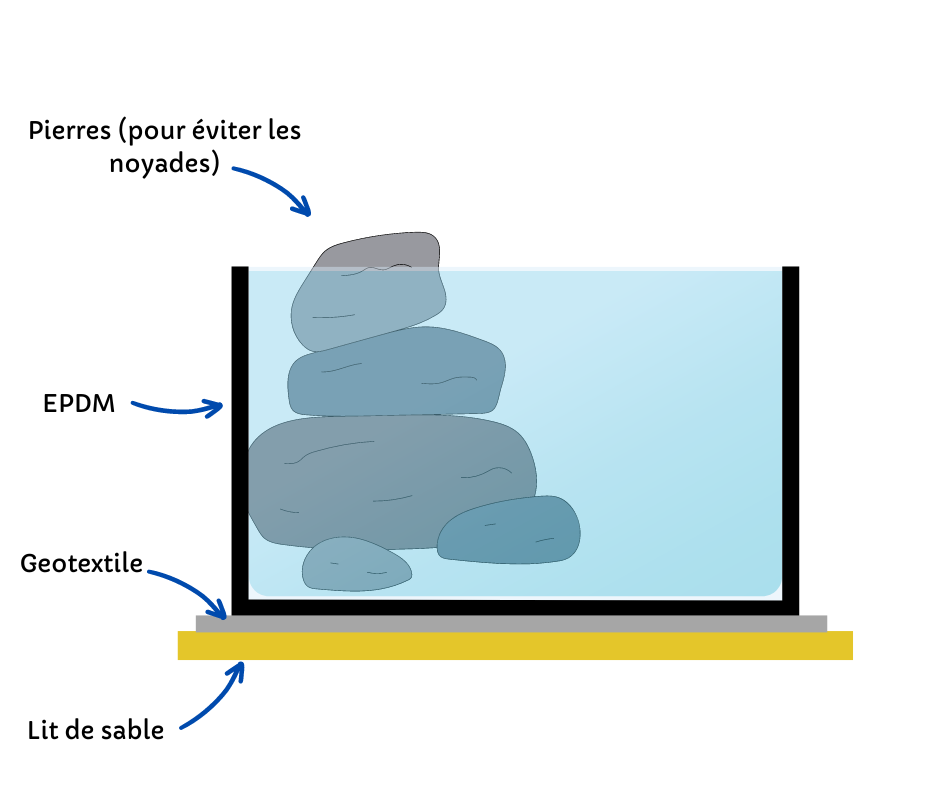
Do I need authorization or a building permit?
In Switzerland: then principle, the creation of a pond requires the submission of a building permit to the local authoritý. If the latter is located in an environment frequented́ by vulnerable people (children, the elderly), the safety standardś for bodies of water and ponds of the Swiss Office for Prevention and Accidents must be respected.
In France: surface area less than 1,000 m² and depth less than 2 m: simply check with the town hall that it is compatible with the POS or PLU.
Surface area greater than 100 m² and depth greater than 2 m: application to the town hall for authorization, subject to the opinion of the departmental council for the environment and health and technological risks (CODERST).
If there are small children in the vicinity, it is important to secure the pond (fence or wire mesh) to avoid any risks! link bauhaus.ch secure fence
Is it possible to install a pond in a school?
Yes, but expect to receive a lot of criticism and opposition… To help you with your arguments, a document on pond safety has been created for this purpose. The bfu technical document demonstrates the risks associated with ponds and explains the safety measures to be taken accordingly. Link to download document
How big does a pond need to be?
Ideally, it should be sinuous and asymmetrical, with a gentle slope (<10°) on at least one bank to allow animals to enter and exit. It should be a minimum of 80cm deep and a maximum of 1m in the center, to protect it from freezing and drying out. However, such a depth should be planned for a small part of the pond and not for the entire pond. Varied depths should be included to encourage a diversity of flora.
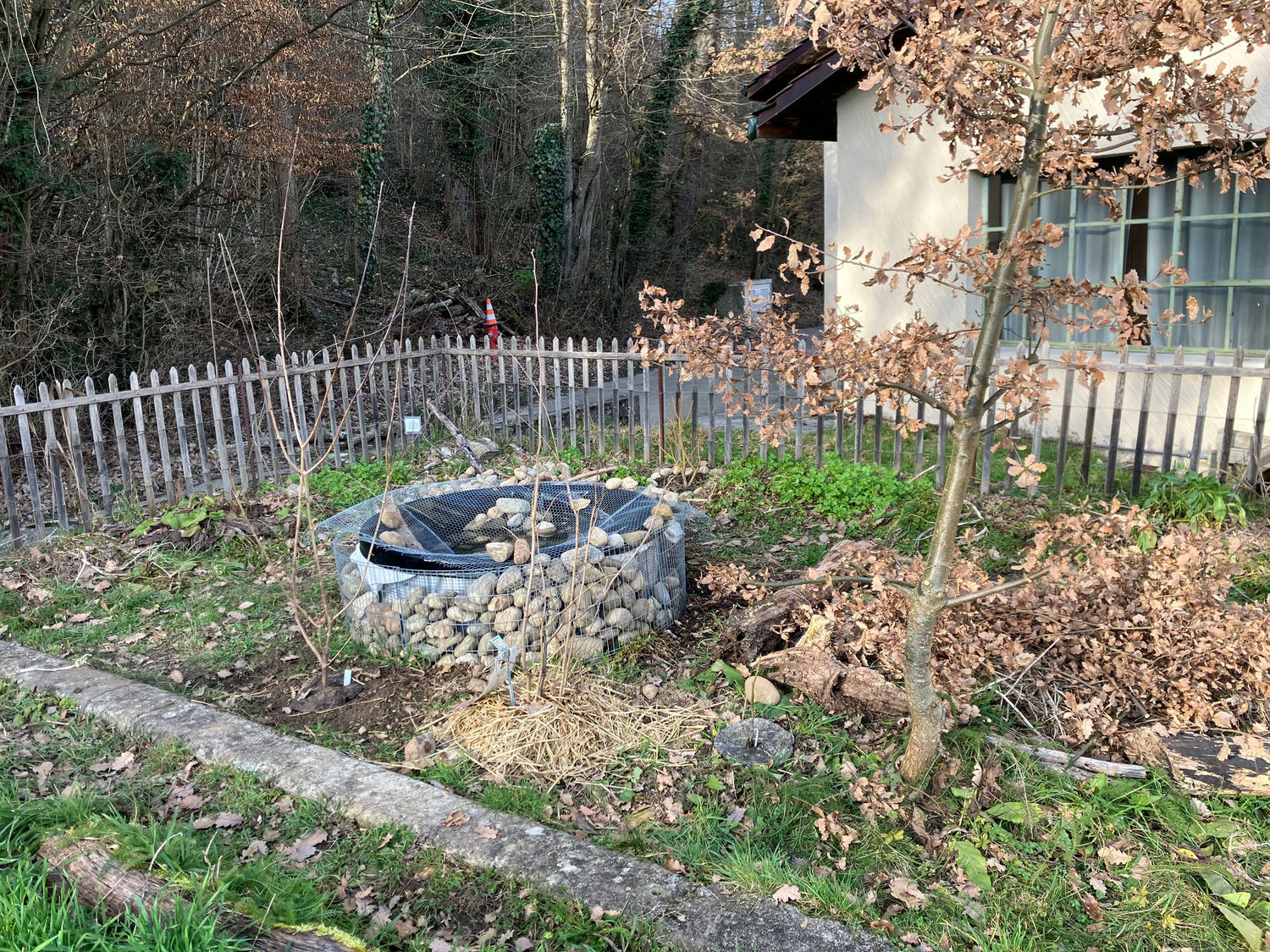
Example of a small above-ground pond (installed free of charge in Geneva by Karch-GE)
If you only have 2 or 3 square meters in your garden, you have plenty of space to create a welcoming pond. Of course, if you want to go bigger, that’s entirely possible, but even with these modest dimensions, you can already attract impressive biodiversity. A pond about 3 metres long, 2.50 metres wide and 80 centimetres deep is an excellent starting point.
In terms of shape, a stepped layout is preferred, as it allows plants to be positioned at different depths. For example:
- Iris: 0 to 20cm
- Oxygenating plants: 20 to 40cm
- Water lilies: 80cm and over
The formula for determining the dimensions of the tarpaulin according to the size of the pond is as follows:
Length of tarpaulin = length of pond + 2x greatest depth + 1m (for edges)
Liner width = width of pond + 2x greatest depth + 1m (for edges)
With a surface area of just 3 m², this small expanse provides a habitat for numerous insects and other small aquatic creatures. However, because of the limited space, vegetation is likely to be sparse and lacking in diversity.
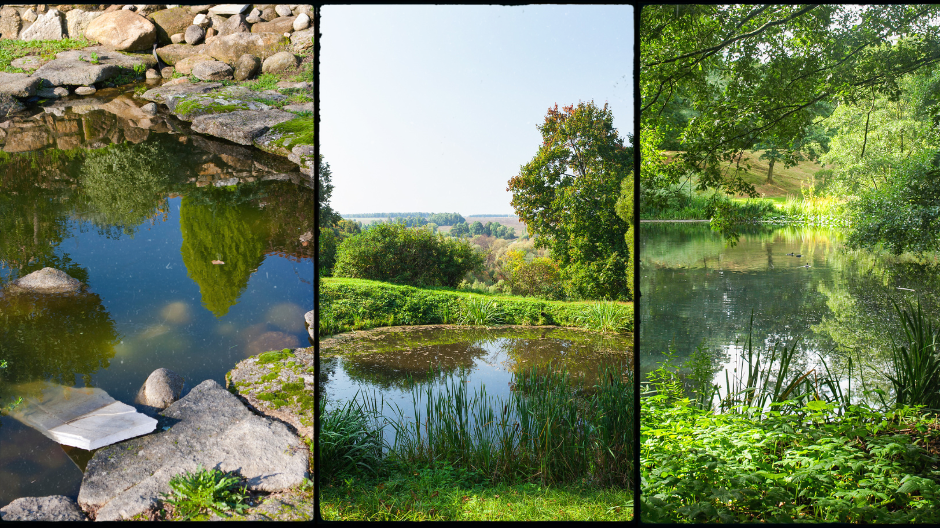
An area of 6 to 7 m²is ideal for promoting maximum biodiversity. A pond of this size can accommodate amphibians, shelter a variety of insects, attract migratory birds and support the growth of various plants.
Beyond 20 m², the surface area becomes larger, requiring major earthworks that can prove complex and costly. However, this size offers greater freedom in terms of the shape you wish to give the pond. It can also act as a water reserve, a considerable asset in these times of repeated heatwaves.
There are several options for creating a pond in your garden:
Underground pond with tarpaulin:
- EPDM tarpaulin Link tarpaulins in SwitzerlandTarpaulin link in France
- Geotextile 300 gr/m2 Geotextile link
If you decide to dig your pond and install the liner, here’s a list of materials you’ll need:
- Spades, shovels, picks
- Consider using a mini-excavator if you can rent one to make the job easier.
- Mason’s level
- One or more wheelbarrows
- Allow several dozen kilos of sand to create a flat surface (approx. 2cm thick) under the Geotextile.
- If rodents are a problem, use wire mesh to protect the watertight surface of the pond. Place under sand and geotextile.
- You can also use stones and logs as decorative elements and to encourage wildlife. You can ask farmers for large stones in their fields – it’s convenient and free.
- Sand, gravel, pebbles or clay to put at the bottom of your pond. It’s a good idea to vary the materials for visual appeal. Above all, don’t use compost or soil, which will attract too much algae.
IMPORTANT! It’s crucial to only fix the cover after filling with water. In this way, the cover will adjust perfectly to the shape of the cavity, preventing stresses and tears.
-
Above-ground pond
If your soil is difficult to dig. Or if you want to install a pond in the city (like right on top of a parking lot…), the above-ground pond is the simplest solution. You can use a pre-formed above-ground pond above-ground pond link.
Or build a concrete or earthen formwork with a tarpaulin to waterproof the pond.
Can you build a pond without a liner?
Yes, there are 2 possible options:
- Preformed (but it’s still plastic…) Prefabricated pond link
- Dig + clay: If you have naturally very clayey soil (very rare), simply dig and flatten the soil beforefilling with water.
WARNING: repeated droughts cause the clay to crack and leak. The experts we consulted were unanimous… They all recommend the use of tarpaulins to seal ponds.

Above, a 150m2 above-ground pond in the city of Geneva. Pond lined with clay (but which unfortunately leaks in summer during heatwaves).
If, on the other hand, you don’t have this type of floor, there is this option:
- The use of natural clay in thick layers
When can I create my pond?
The best time to create a pond is before the heavy rains of winter and spring. This allows the pond to fill up with precipitation falling directly on its surface.
In early spring, you’ll already be able to observe a few insects evolving in your fall-installed pond. When it comes to planting, we recommend starting with shoreline plants in autumn. However, other plant varieties should be introduced in spring, once there’s no longer a risk of frost. This ideal period runs from March to October, or when the water temperature reaches or exceeds 12°C. This guarantees optimum conditions for the establishment and successful growth of aquatic vegetation throughout the season.
Can I use tap water to fill my pond?
Once your pond has been installed and is watertight, it can be filled from the mains water supply. However, it is important to consider this measure only for the first filling, without repeating it over time. Tap water, rich in mineral elements, has the potential toalter the biological quality of the environment, hence the need to limit its use if possible only to this initial stage.
We recommend that you fill the pond using rainwater and roof water. This can be done by temporarily diverting the gutters to the pond.
If you wish to maintenance of an adequate water level during the summer, it is advisable to provide a rainwater reserve. This will help limit the drop in water level during drier periods and ensure the durability of your pond.
Note, however, that it is not generally necessary to compensate for seasonal variations in pond level. These fluctuations are an integral part of the natural dynamics of the pond and contribute to its equilibrium. In the event of drought, a minimum water level must be maintained. As soon as it falls below half its volume, or as soon as the roots of established plants are exposed to the air, top up the water level. To maintain life in the pond, it must not dry out completely.
What plants can I put in my pond?
Choose plants that preferdifferent heights of water, including submerged, floating and oxygenating species, to create a diverse flora. Choose two or three species from the suggested list, and plan for one to three plants per species.
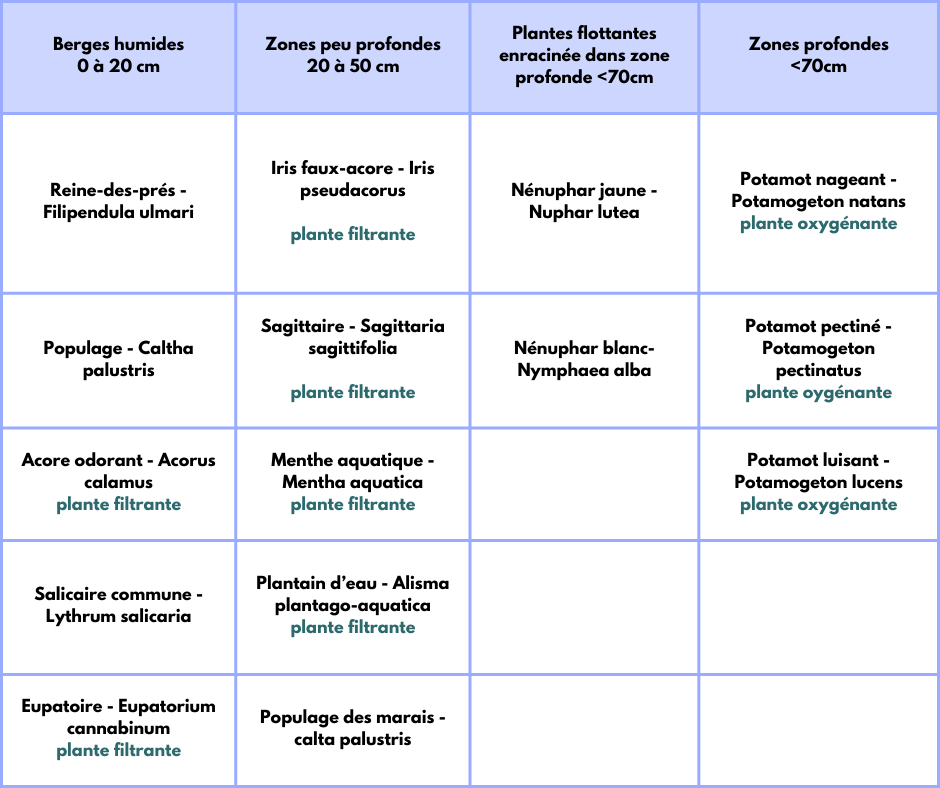


Filtering plants (phragmites, submerged corniflower(Ceratophyllum demersum), typha genus (cattails)) Irises also filter water to a lesser extent. Phragmites, corniflowers and cattails should be placed in pots immersed in the pond to limit their invasion. If there are no fish, the water will remain clear.
We recommend the use of aquatic baskets for planting your aquatic plants to limit their expansion and facilitate maintenance.
Absolutely avoidexotic plants that are invasive, such as :

We recommend limiting plants with a high colonization capacity, such as cattails and reeds, as well as covering plants like water lilies. Otherwise, you should plan tointervene every year to limit their development.
To obtain your plants, you can buy them from nurseries specializing in native plants, or take them from a natural pond, provided you obtain the owner’s agreement and avoid protected sites and species.
It’s a good idea to keep some areas pristine to allow spontaneous colonization by local species.
Should I put fish in my pond?

It’s not advisable to introduce fish into a pond, as they act as predators and consume tadpoles and other larvae, throwing the ecosystem out of balance. What’s more, adding fish requires the installation of a pump and increased maintenance, which can be tedious.
Fish disrupt the balance of the pond by digging up plants, and promote algal blooms through their excrement. In addition, managing fish births, which quickly lead to overpopulation, can become a further challenge.
It’s important to note that natural ponds quickly become populated by a variety of wildlife. It is not only pointless, dangerous for them and even illegal (especially in the case of amphibians) to take wild animals and introduce them into your pond.

Fun fact it’s possible for fish to find their way into a pond thanks to birds. Birds can carry fish eggs, larvae and seeds on their feathers, legs or beaks. When moving between different bodies of water, birds can therefore unintentionally introduce fish into a pond (Ornithochore dispersal).
While this may be a natural way of introducing fish into a pond, it can also have implications for the ecological balance of the aquatic ecosystem, especially if the introduced fish are not native to the area. It is therefore important to monitor the species composition of the pond and act accordingly.
Will there be mosquitoes?
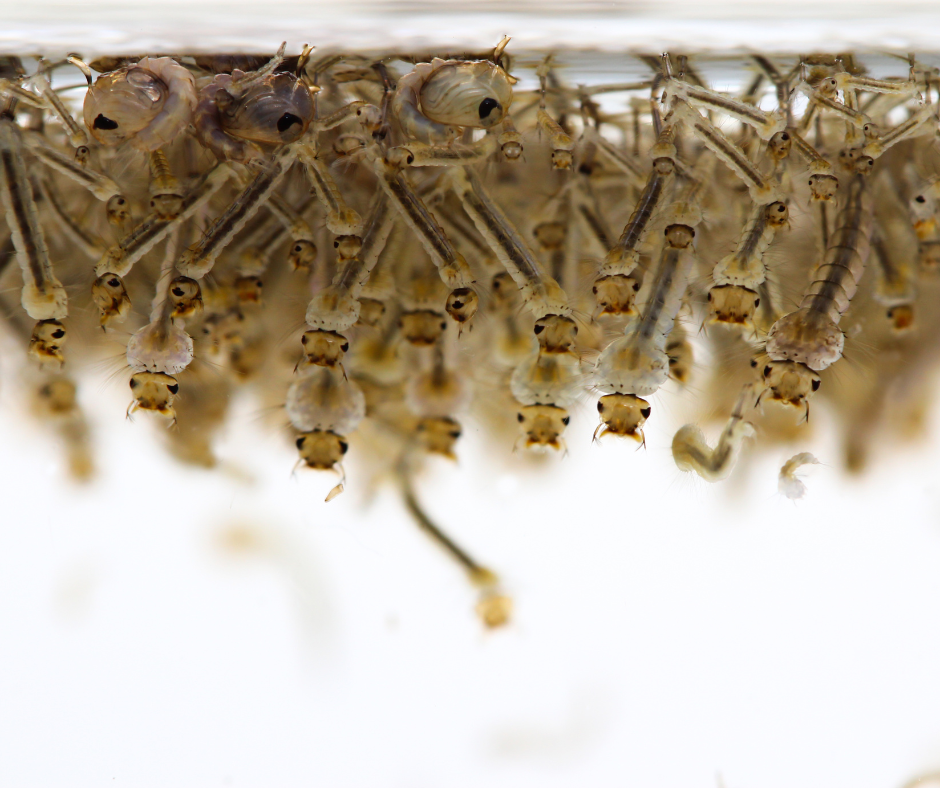
If your pond is home to amphibians and insects such as dytic larvae and dragonflies, which are predators of mosquitoes, you shouldn’t encounter any major problems in this respect. Natural ponds, with their biodiversity, help maintain an ecological balance that limits the proliferation of mosquitoes.
The real problem with mosquitoes is in stagnant water that is devoid of other forms of life. This often involves places like the bottom of underpots, old tires, forgotten cans or basins, and so on.
Conclusion
In short, incorporating a pond into your garden offers a multitude of advantages without adding extra chores. Maintenance is simple, and the benefits far outweigh the drawbacks. By promoting biodiversity and recreating an ecosystem, the pond regulates pest populations while providing a vital source of water and food for garden helpers. From a permaculture point of view, complexity reinforces the resilience of the system, so the addition of a pond represents an undeniable enrichment of that complexity. Integrating a pond is a pleasure for the gardener and a source of enchantment for the children, contributing to the happiness and blossoming of the garden. Now that you know everything there is to know about creating a pond, it’s time to get started!
KARCH-GE, an association for the study and protection of amphibians and reptiles, creates small ponds for private individuals, municipalities, companies and local authorities throughout the Geneva basin.
Link to install your pond free of charge until 2027 with the 222 ponds project. here
Link from pro natura and karch in Geneva to install a water point in his commune: visit
Article written by Axelle Müller as part of her internship at Hépia(Geneva School of Landscape, Engineering and Architecture).

